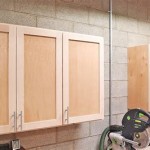Best Paint or Stain for Kitchen Cabinets: A Comprehensive Guide
Kitchen cabinets are a focal point of any kitchen, significantly impacting the overall aesthetic and functionality of the space. Choosing the right finish for these cabinets is crucial, not only for visual appeal but also for long-term durability and ease of maintenance. The decision between paint and stain is a fundamental one, each offering distinct advantages and disadvantages depending on the existing cabinet material, desired style, and lifestyle considerations. This article provides a comprehensive overview of the best paint and stain options for kitchen cabinets, detailing their properties, application techniques, and suitability for various kitchen environments.
The selection process should begin with a thorough assessment of the existing cabinets. Are they made of solid wood, wood veneer, laminate, or MDF (Medium Density Fiberboard)? The material composition will significantly limit or expand the range of suitable products. Solid wood, for example, is a more versatile surface that can accommodate both paint and stain, while laminate cabinets are typically only suitable for painting with specific primers and paints designed for adhesion to non-porous surfaces. Understanding the existing finish, if any, is also critical, as this will influence the preparation required before applying a new coat of paint or stain. Thorough cleaning and sanding are typically essential for optimal adhesion and a smooth, professional finish.
Paint for Kitchen Cabinets: Options and Considerations
Paint offers a wide array of color choices and finish options, allowing for extensive customization and the ability to completely transform the look of kitchen cabinets. It provides a solid, opaque layer that covers the underlying wood grain, offering a more modern or contemporary aesthetic. However, paint can also highlight imperfections in the cabinet surface if not properly prepared. Several types of paint are suitable for kitchen cabinets, each with its own characteristics and performance attributes.
Acrylic latex paint is a popular choice due to its water-based formulation, low VOC (Volatile Organic Compounds), ease of application, and durability. It offers good adhesion, resists chipping and cracking, and cleans up easily with soap and water. Acrylic latex paint is available in various sheens, including matte, satin, semi-gloss, and gloss. For kitchen cabinets, semi-gloss or gloss finishes are typically preferred due to their enhanced durability and ease of cleaning. These sheens are more resistant to moisture, grease, and stains, making them ideal for the demanding environment of a kitchen.
Alkyd paint, also known as oil-based paint, provides a harder, more durable finish than acrylic latex paint. It offers excellent adhesion, superior flow and leveling properties (resulting in a smoother finish), and greater resistance to chemicals and solvents. However, alkyd paint typically contains higher VOC levels, requires mineral spirits for cleanup, and takes longer to dry than acrylic latex paint. The extended drying time can be advantageous, allowing the paint to self-level and minimize brush marks, but it also means the painting process will take longer. Due to environmental concerns and stricter regulations regarding VOC emissions, alkyd paints are becoming less common and may be difficult to find in some areas.
Acrylic enamel paint combines the benefits of both acrylic and alkyd paints. It offers the durability and hardness of alkyd paint with the low VOC levels and easy cleanup of acrylic latex paint. Acrylic enamel paint provides excellent adhesion, resists chipping and scratching, and dries to a smooth, hard finish. It is often recommended for high-traffic areas, such as kitchen cabinets, where durability and ease of maintenance are paramount.
Preparation is key to achieving a professional-looking paint finish on kitchen cabinets. This process typically involves removing the cabinet doors and hardware, thoroughly cleaning the surfaces with a degreaser, sanding to create a smooth and uniform surface, and applying a primer. Priming is essential for ensuring proper adhesion, blocking stains, and creating a uniform surface for the paint to adhere to. A high-quality primer specifically designed for use with the chosen paint is recommended. Applying multiple thin coats of paint, allowing each coat to dry completely before applying the next, will result in a smoother, more durable finish than applying a single thick coat.
Stain for Kitchen Cabinets: Preserving Natural Beauty
Stain enhances the natural beauty of wood by penetrating the surface and highlighting the grain pattern. It provides a translucent finish that allows the wood's texture and character to shine through. Stain is best suited for solid wood cabinets, as it will not adhere properly to veneer or laminate surfaces. The selection of stain is typically driven by the desired color and the existing wood species. Different wood species will absorb stain differently, resulting in variations in color and intensity.
Oil-based stains are a traditional choice for wood finishing, offering excellent penetration, rich color, and a durable finish. They provide a longer working time, allowing for easy application and even distribution of color. Oil-based stains typically require a longer drying time than water-based stains and require mineral spirits for cleanup. They also tend to have higher VOC levels, which may be a concern for some homeowners.
Water-based stains are a more environmentally friendly option, with low VOC levels and easy cleanup with soap and water. They dry faster than oil-based stains, which can reduce the overall project time. However, water-based stains may not penetrate as deeply as oil-based stains and may require multiple coats to achieve the desired color intensity. They can also raise the grain of the wood, requiring light sanding after the first coat to create a smooth finish.
Gel stains are a thicker, more viscous type of stain that is often used on non-porous surfaces or vertical surfaces where dripping may be a concern. They provide excellent color control and are less likely to run or sag. Gel stains are also a good option for staining previously finished surfaces, as they create a film that adheres to the existing finish. However, gel stains may not penetrate as deeply as liquid stains and may not highlight the wood grain as effectively.
Preparing cabinets for staining involves similar steps to preparing them for painting: cleaning, sanding, and removing any existing finish. It is crucial to remove all remnants of old paint or varnish to ensure that the stain can penetrate the bare wood. After sanding, wipe down the surface with a tack cloth to remove any dust or debris. Applying the stain evenly and in the direction of the wood grain is essential for achieving a uniform color. Excess stain should be wiped off with a clean cloth to prevent a sticky or uneven finish. After the stain has dried completely, apply a clear topcoat to protect the wood and enhance its durability. Polyurethane, varnish, or lacquer are common choices for topcoats, offering varying levels of durability and sheen.
Key Considerations for Choosing Between Paint and Stain
The final decision between paint and stain will depend on several factors, including the existing cabinet material, the desired aesthetic, and the homeowner's personal preferences. Paint is a versatile option that allows for extensive customization, while stain highlights the natural beauty of wood. Consider the following key points when making your decision:
Cabinet Material: Solid wood cabinets are ideal for both paint and stain, while veneer or laminate cabinets are typically better suited for painting. MDF cabinets can be painted, but require careful preparation and priming to ensure proper adhesion. If the existing cabinets are made of a material that is not suitable for staining, painting is the only viable option.
Desired Aesthetic: Paint provides a solid, opaque finish that can create a modern or contemporary look. Stain enhances the natural beauty of wood and creates a more traditional or rustic aesthetic. Consider the overall style of the kitchen and choose the finish that best complements the existing decor.
Maintenance and Durability: Both paint and stain require regular cleaning and maintenance to keep them looking their best. Paint is generally more susceptible to chipping and scratching than stain, but it can be easily touched up. Stain may fade over time, especially in direct sunlight, but it is less likely to chip or peel. Choose a finish that suits your lifestyle and the level of wear and tear the cabinets will be subjected to.
Cost and Time: The cost of painting or staining kitchen cabinets will depend on the type of paint or stain used, the size of the cabinets, and whether you hire a professional or do it yourself. Painting is typically less expensive than staining, as it requires less preparation and fewer coats of finish. However, the labor involved in both processes can be significant, especially if you are doing it yourself. Consider your budget and your time constraints when making your decision.
Regardless of whether paint or stain is selected, thorough preparation, proper application techniques, and the use of high-quality products are essential for achieving a beautiful and durable finish on kitchen cabinets. Careful planning and attention to detail will result in a kitchen that is both aesthetically pleasing and functional for years to come.

Painted Vs Stained Cabinets Which Fits Your Style Best

Painted Wood Cabinets Vs Stained A Questionnaire Kylie M Interiors

Farmhouse Check In A What We Chose Edition Stained Wood Or Painted Cabinets Emily Henderson

Stained Vs Painted Kitchen Cabinets

Painted Vs Stained Cabinets Jm Kitchen And Bath Design
8 Best Cabinet Finishes Paints Stains Glazes And More Vevano

Painted Vs Stained Cabinets How To Compare When Use Both

Painted Vs Stained Kitchen Cabinets

Painted Wood Cabinets Vs Stained A Questionnaire Kylie M Interiors

How To Paint Kitchen Cabinets Like The Pros
Related Posts








